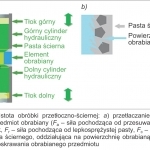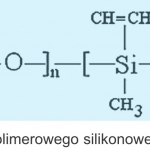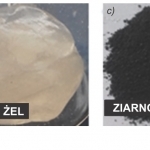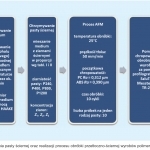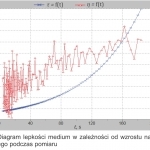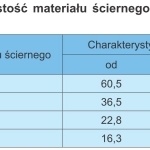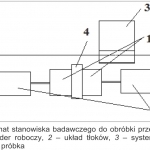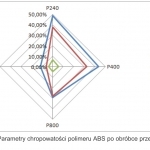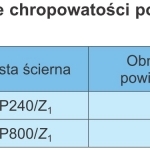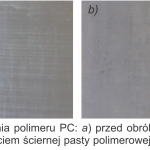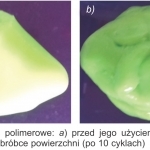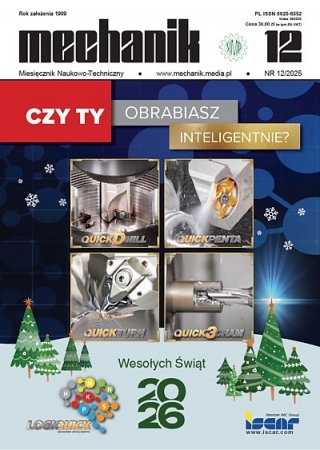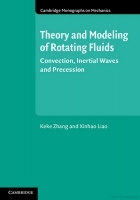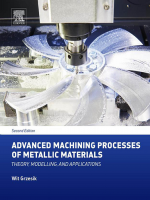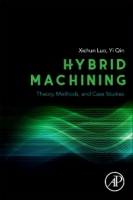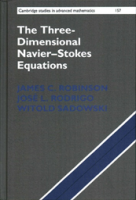Zastosowanie polimerów jako mediów ściernych w obróbce przetłoczno-ściernej *
The application of polymers as abrasive media in abrasive flow machining
Author: Agnieszka Nowacka, Tomasz Klepka
Mechanik nr 04/2019 - Przetwórstwo tworzyw sztucznych
STRESZCZENIE: Obróbka przepływem ściernym (abrasive flow machining) jest – ze względu na swą charakterystykę – odpowiednią metodą polerowania złożonych otworów i zakrzywionych powierzchni. W przypadku tradycyjnych metod obróbki strumieniem ściernym (AFM) trudno jest uzyskać jednolitą chropowatość promieniowego rozkładu podczas polerowania skomplikowanych otworów, co wynika z nierównomiernego rozłożenia sił ściernych. Media ścierne są narzędziami roboczymi odpowiadającymi za polerowanie w procesie AFM. Ze względu na wysoką cenę medium ściernego nie każdy użytkownik może sobie pozwolić na wykorzystanie go do obróbki. Dlatego autorzy opracowali tańsze i skuteczniejsze media ścierne, zapewniające poprawę chropowatości powierzchni elementów wyrobów polimerowych. W artykule omówiono zastosowanie polimerów lepkosprężystych jako mediów do obróbki przetłoczno-ściernej. Dodatkowo zaproponowano modyfikacje w zakresie ilości i wielkości ziaren ściernych wypełniających medium ścierne, aby zwiększyć wartość siły nacisku ziarna na obrabianą powierzchnię i uzyskać równą powierzchnię złożonych otworów w procesie obróbki AFM.
SŁOWA KLUCZOWE: obróbka przetłoczno-ścierna, polimery lepkosprężyste, trybologia
ABSTRACT: The characteristics of the products’ treatment by the abrasive flow machining (AFM) makes it an appropriate method of finishing the surface with complex geometry, e.g. holes or channels. Traditional methods of machining cause difficulties in obtaining a homogeneous roughness during finishing complicated shapes due to uneven distribution of abrasive forces. Due to the high price of abrasive media, not every user can afford for using it for processing. In the frame of the research, the novelty abrasive media has been developed to improve the surface roughness of the elements of polymer products. The use of viscoelastic polymers as a media of flow abrasive machining was discussed. Moreover, it is suggested to modify the quantity and size of abrasive grains filling the abrasive media in order to increase the value of the grain pressure force on the machined surface and to obtain an even surface of complex holes in AFM process.
KEYWORDS: abrasive flow machining, viscoelastic polymers, tribology
BIBLIOGRAFIA / BIBLIOGRAPHY:
[1] Klepka T. (praca zbiorowa). „Nowoczesne materiały polimerowe i ich przetwórstwo. Część 1”. Lublin: Politechnika Lubelska, 2014.
[2] Wang C., Cheng K.C., Chen K.Y., Lin Y.C. “A study on the abrasive gels and the application of abrasive flow machining in complex-hole polishing”. Procedia CIRP. 68 (2018): 523–528.
[3] Kumara R., Murtaza Q., Walia R.S. “Three start helical abrasive flow machining for ductile materials”. Procedia Materials Science. 6 (2014): 1884–1890.
[4] Uhlmann E., Schmiedel C.S., Wendler J. “CFD simulation of the abrasive flow machining process”. Procedia CIRP. 31 (2015): 209–214.
[5] Butola R., Jain R., Bhangadia P., Bandhu A., Walia R.S., Murtaza Q. “Optimization to the parameters of abrasive flow machining by Taguchi method”. Materials Today: Proceedings. 5 (2018): 4720–4729.
[6] Brown E., Jaeger H.M. “Shear thickening in concentrated suspensions: phenomenology, mechanisms and relations to jamming”. Reports on Progress in Physics. 77, 4 (2014): 1–24.
[7] Hashimoto F., Yamaguchi H., Krajnik P., Wegener K., Chaudhari R., Hoffmeister H.W., Kuster F. “Abrasive fine-finishing technology”. CIRP Annals – Manufacturing Technology. 65 (2016): 597–620.
[8] Brown E., Jaeger H.M. “The role of dilation and confining stress in shear thickening of dense suspensions”. Journal of Rheology. 56, 4 (2012): 875–923.
[9] Oniszczuk-Świercz D., Świercz R., Dąbrowski L. „Mikroobróbka wykończeniowa – obróbka przetłoczno-ścierna”. Mechanik. 8–9 (2016): 1132–1133.
[10] Kumar S., Hiremath S.S. “A review on abrasive flow machining (AFM)”. Procedia Technology. 25 (2016): 1297–1304.
[11] Sankar M.R., Jain V.K., Rajurkar K.P. “Nano-finishing studies using elastically dominant polymers blend abrasive flow finishing medium”. Procedia CIRP. 68 (2018): 529–534.
[12] Wang R., Lim P., Heng L., Mun S.D. “Magnetic abrasive machining of difficult-to-cut materials for ultra-high-speed machining of AISI 304 bars”. Materials. 10 (2017): 1029–1041.
DOI: https://doi.org/10.17814/mechanik.2019.4.32
* Artykuł recenzowany



